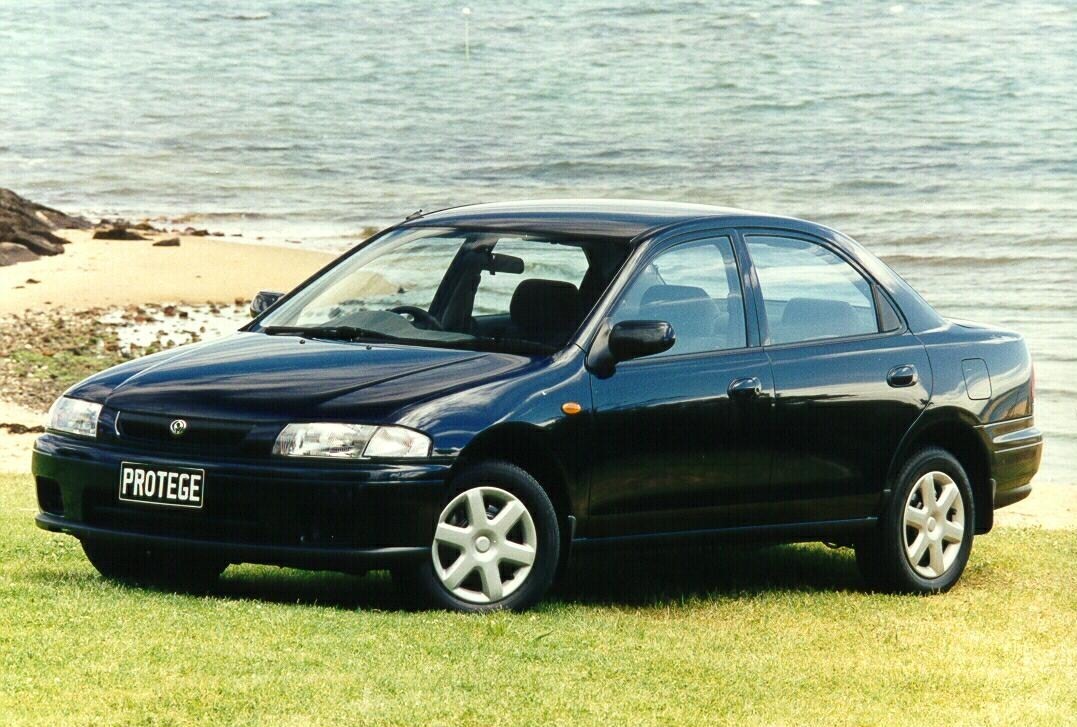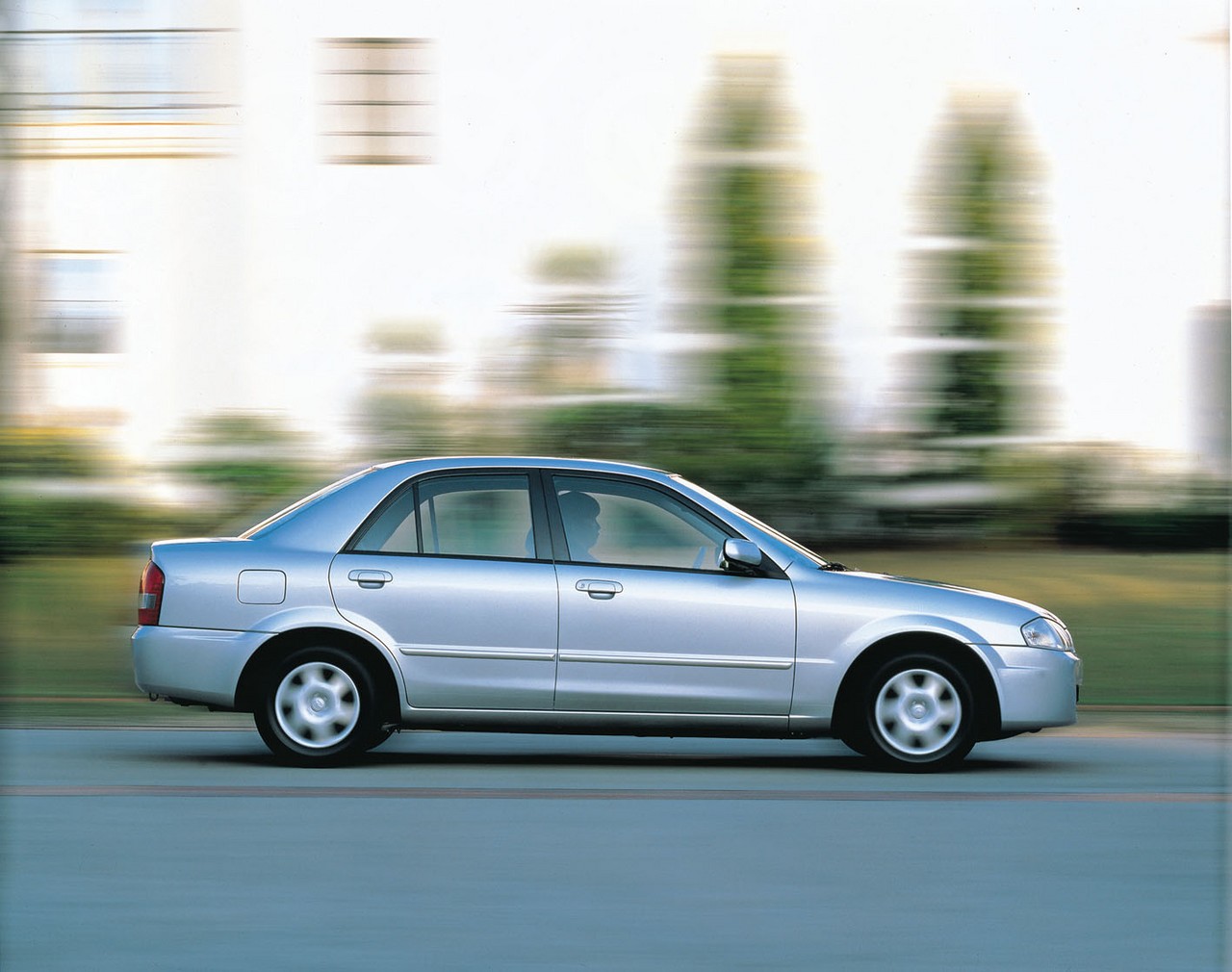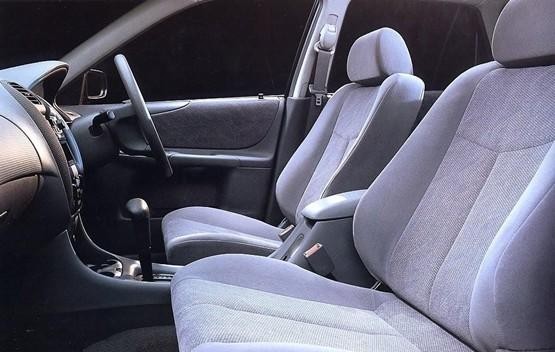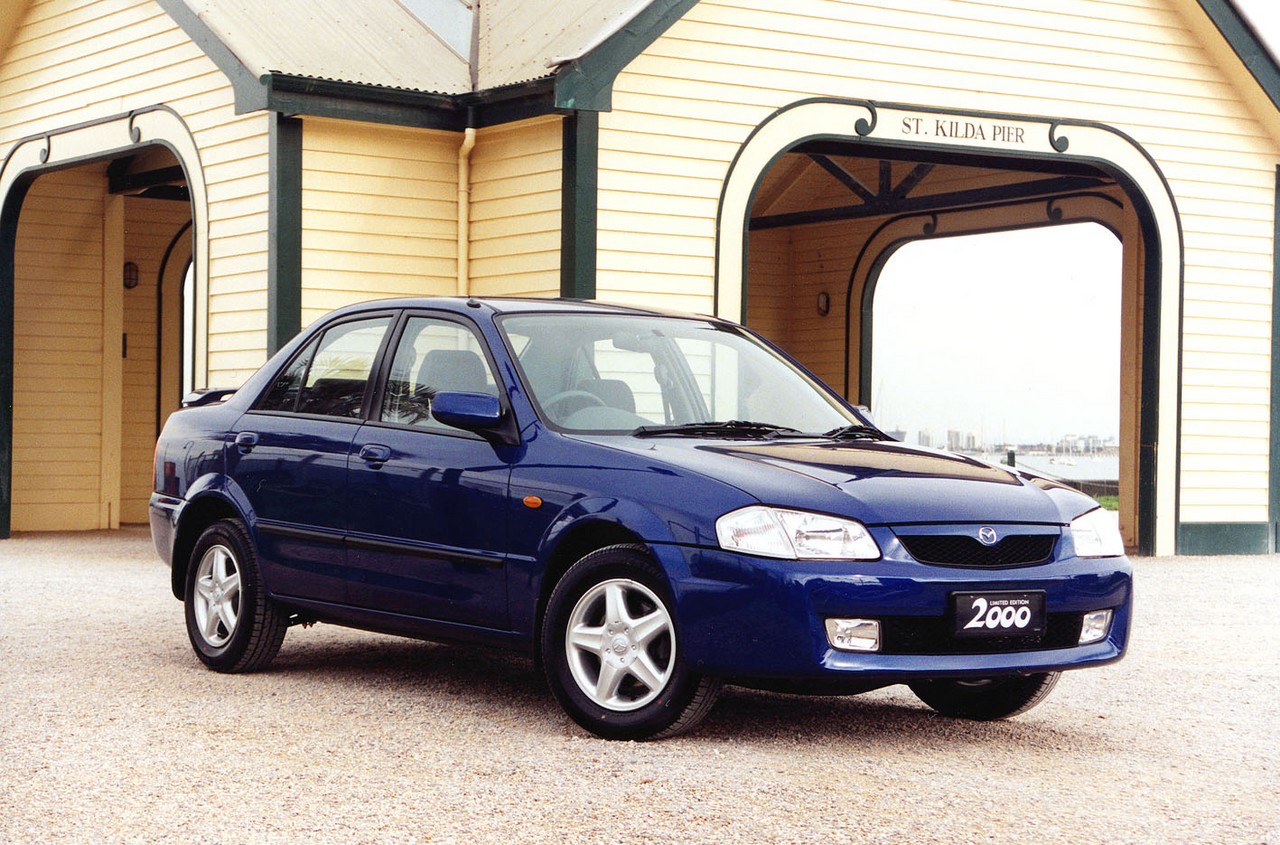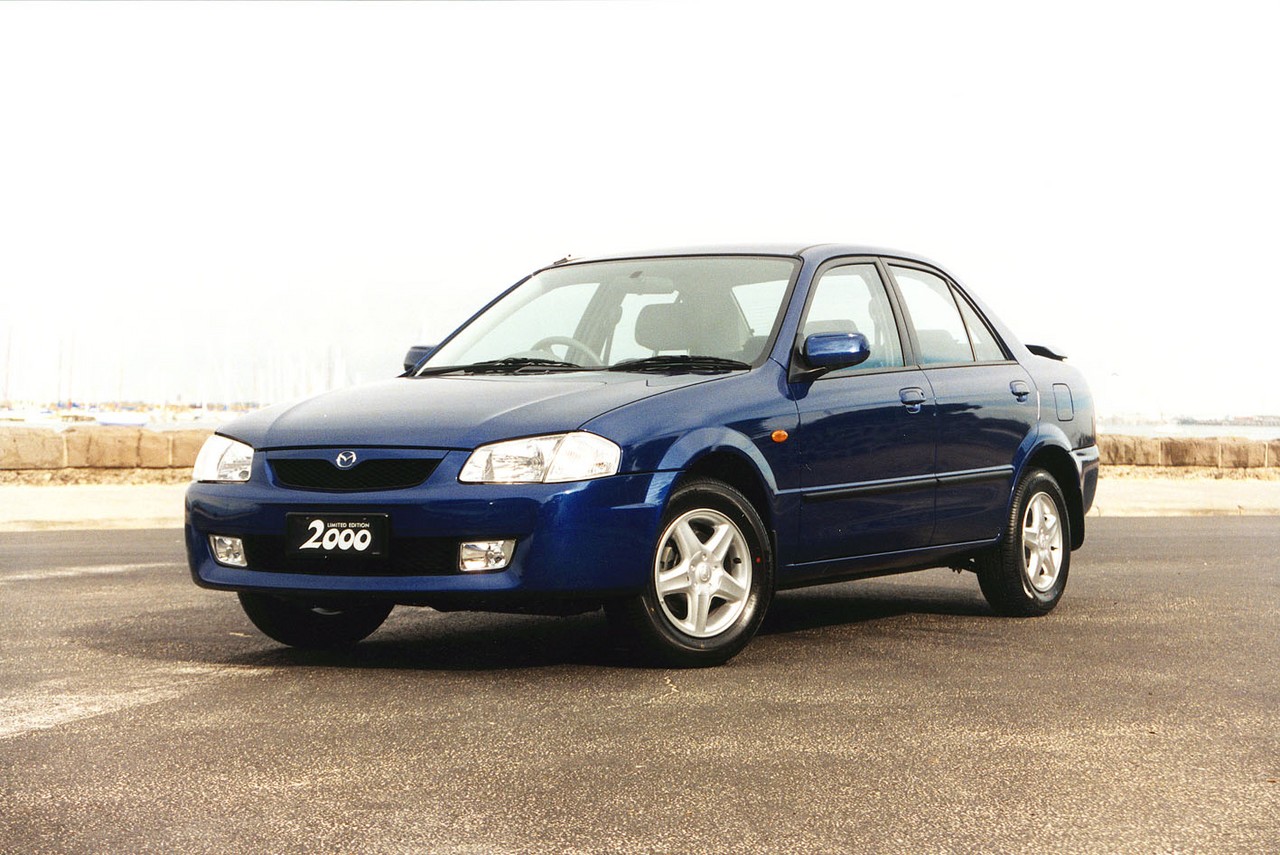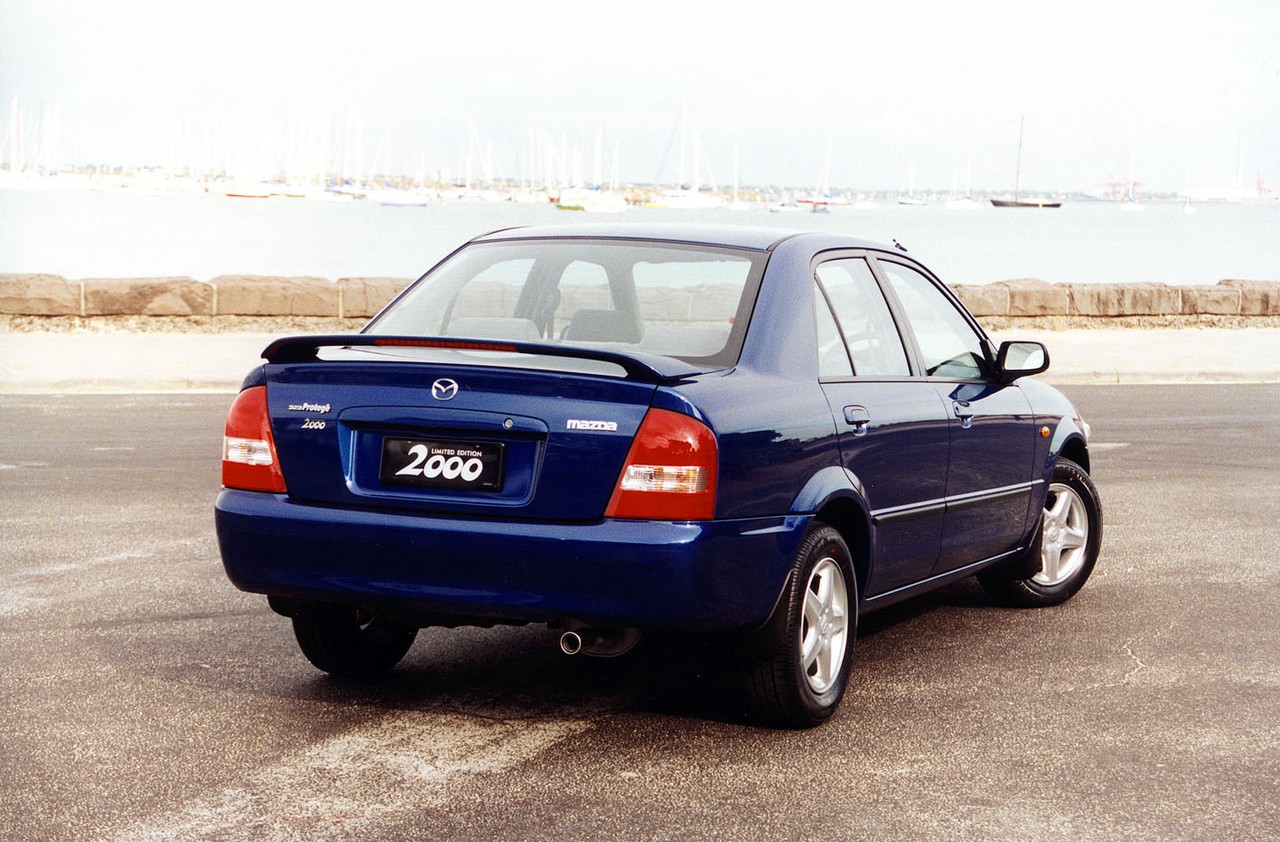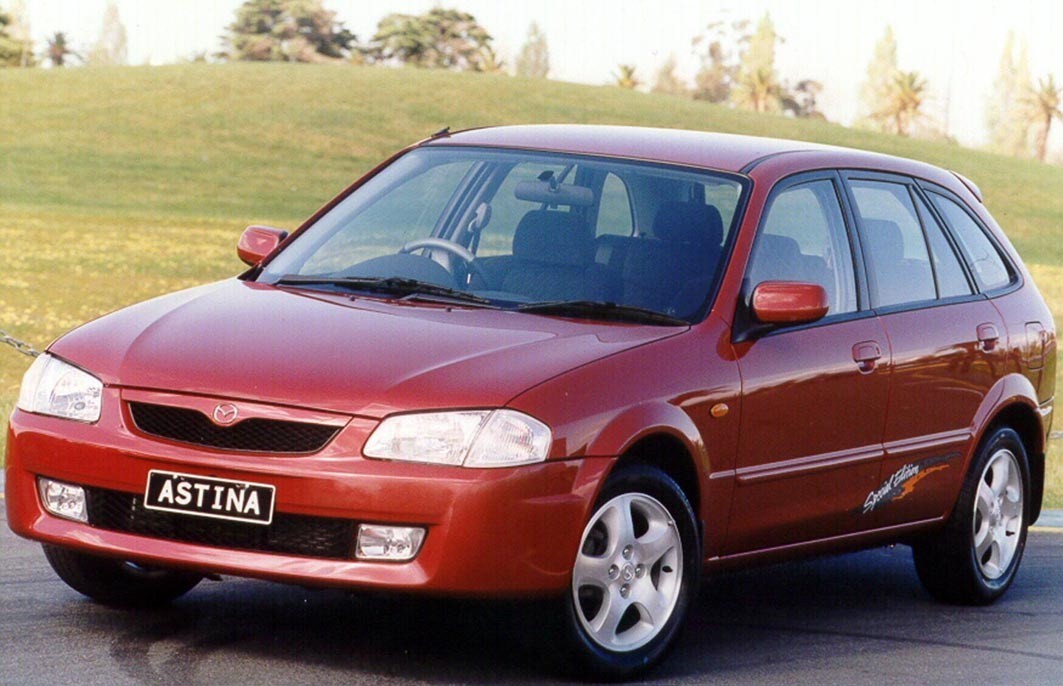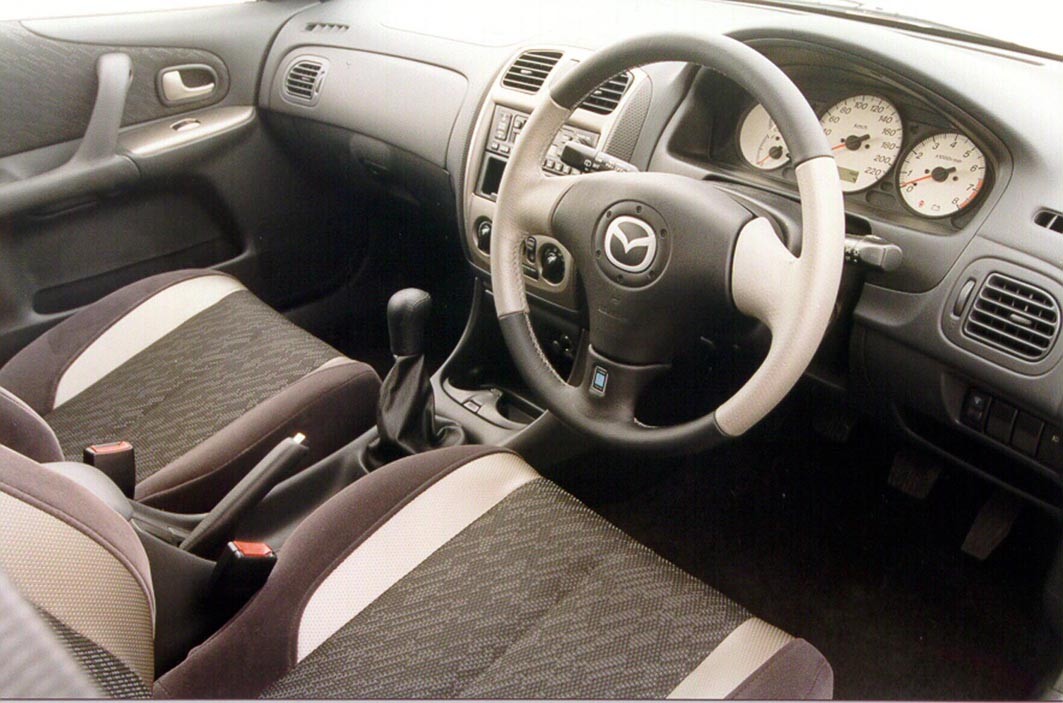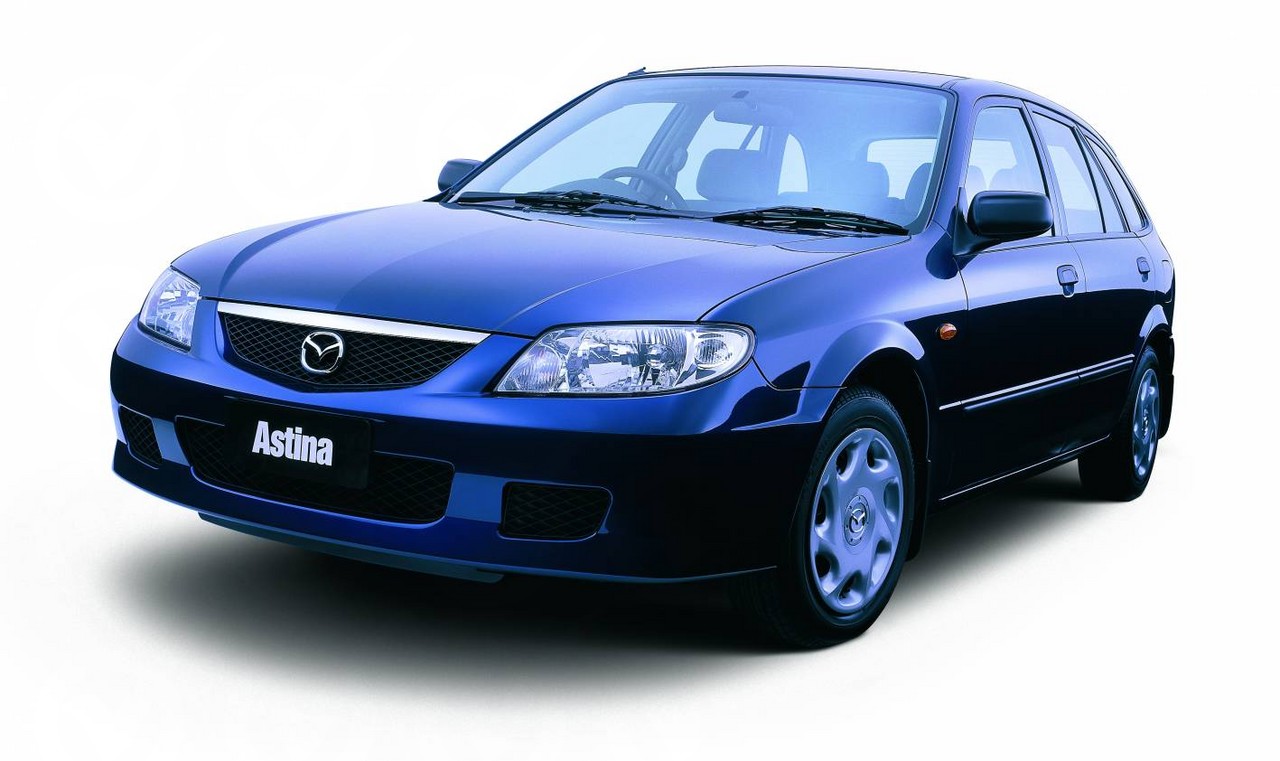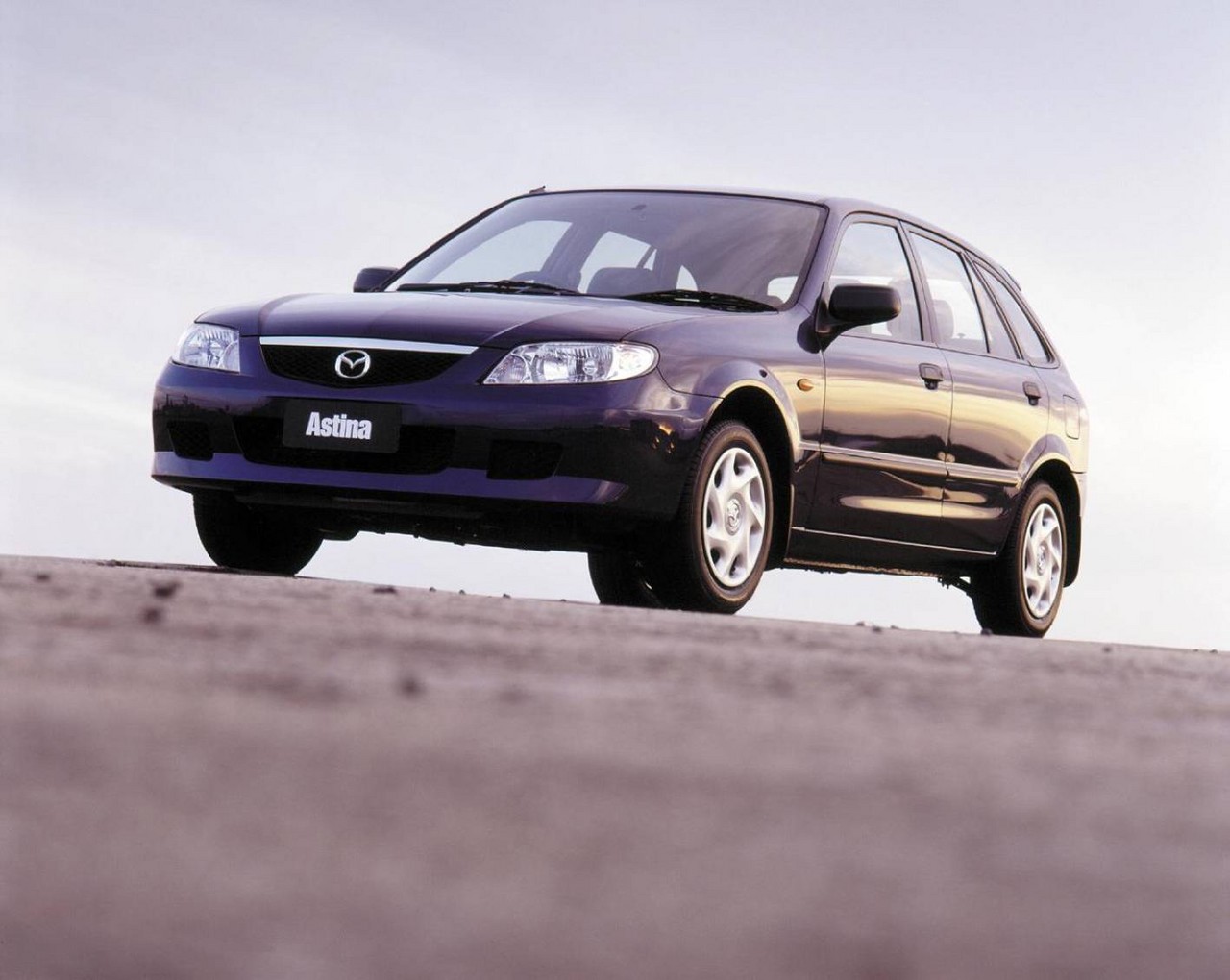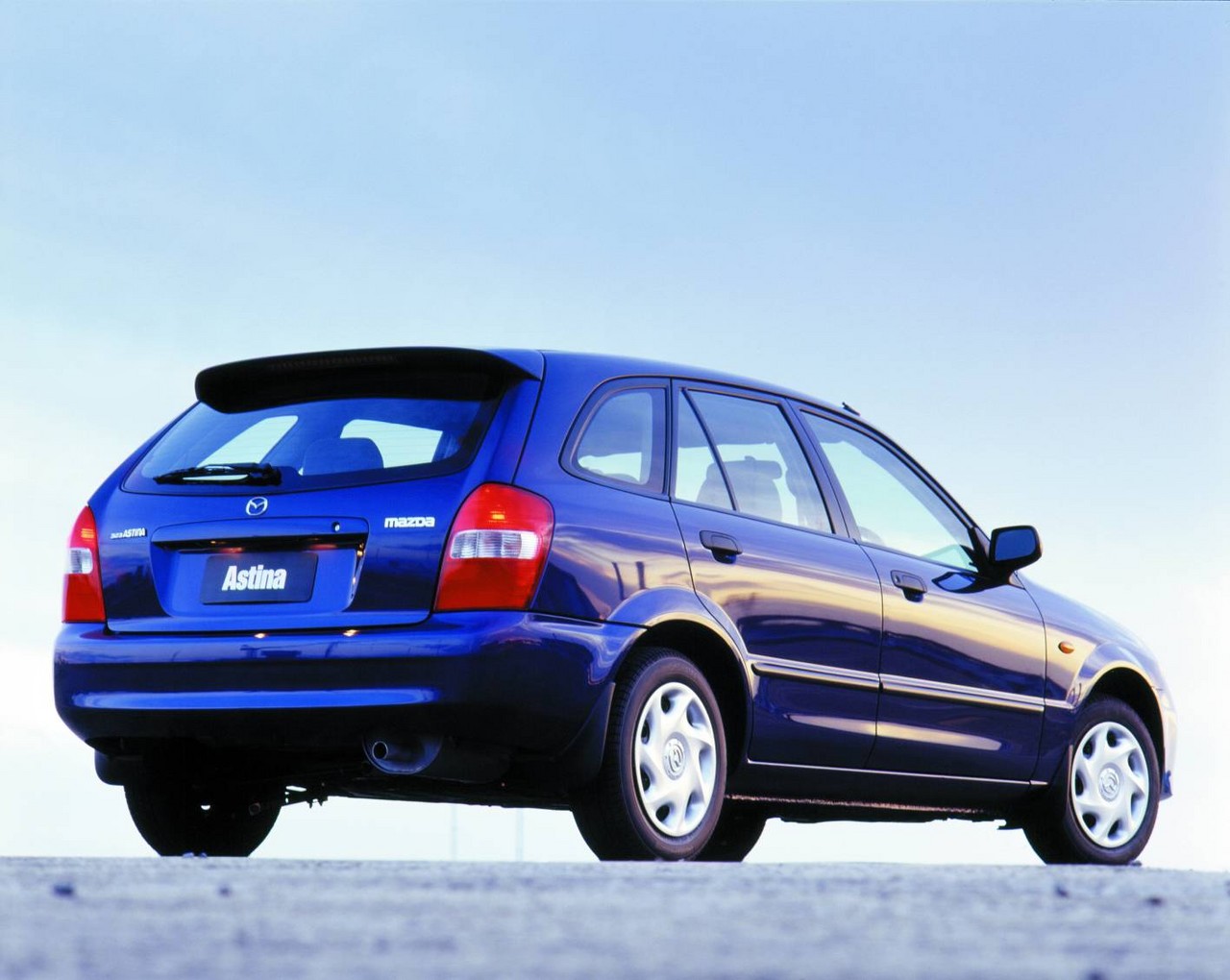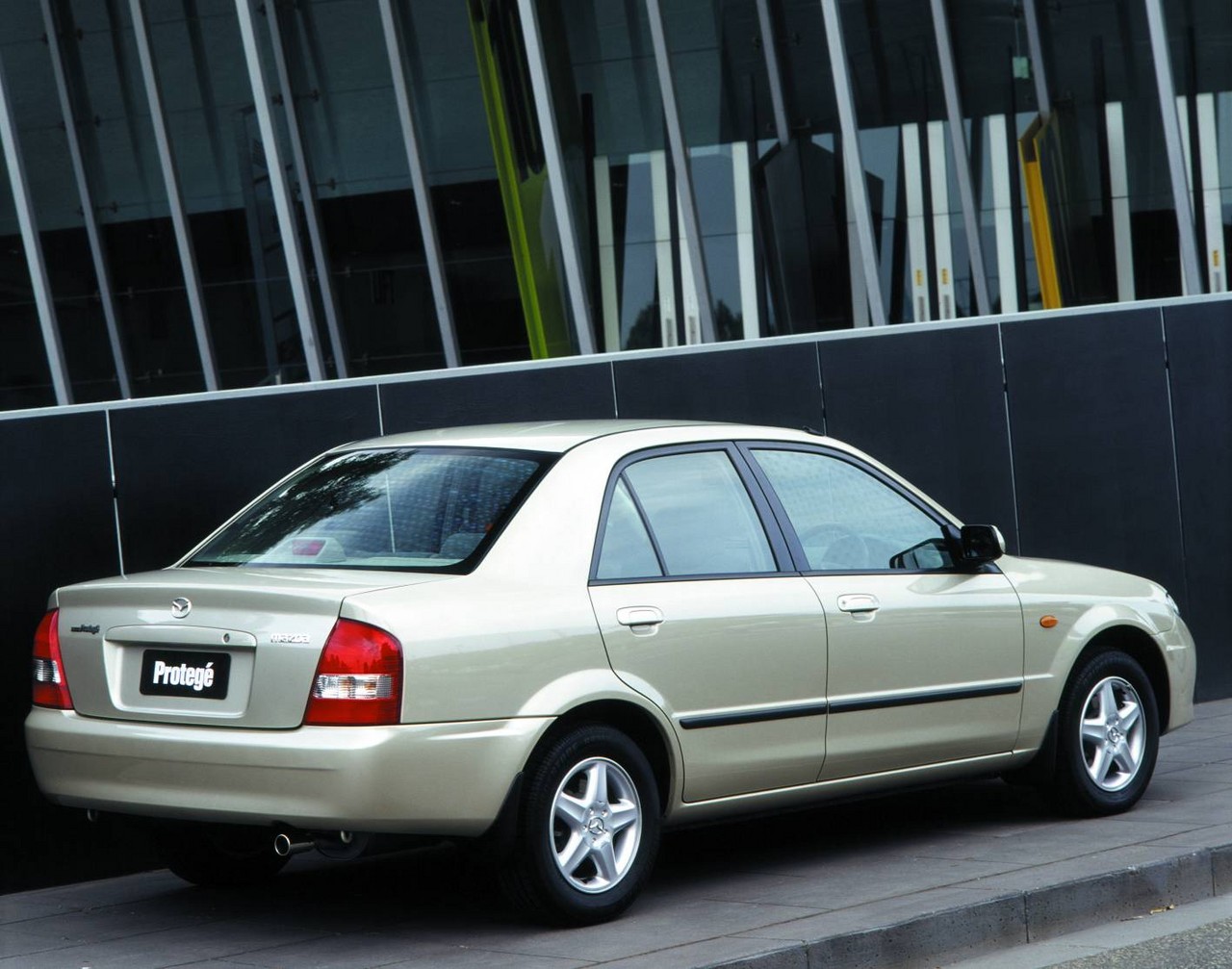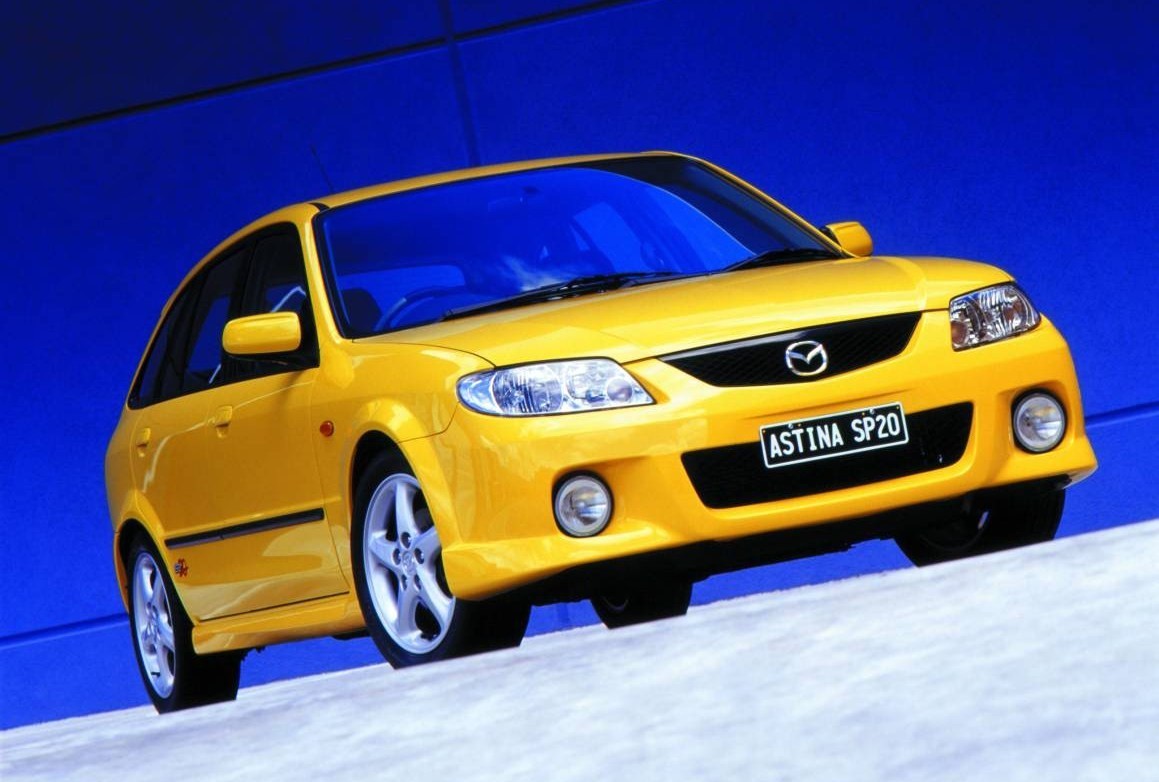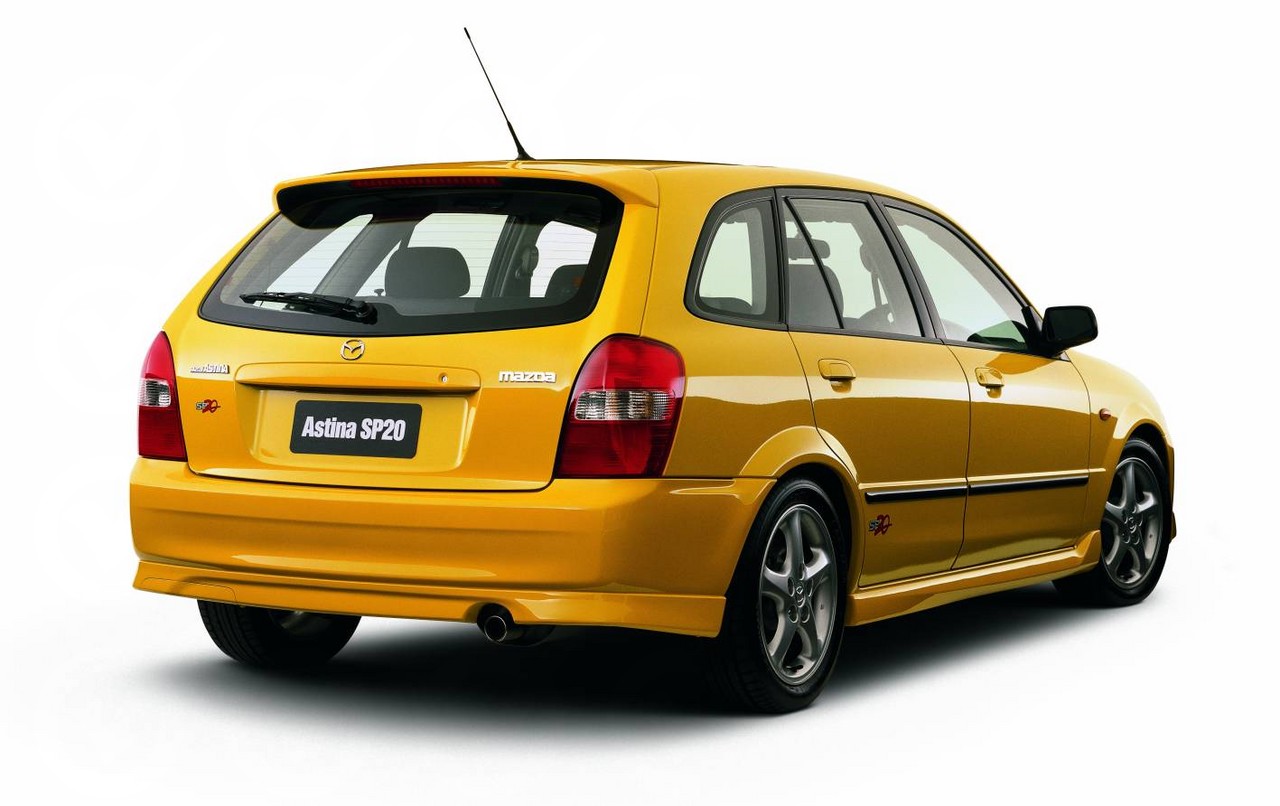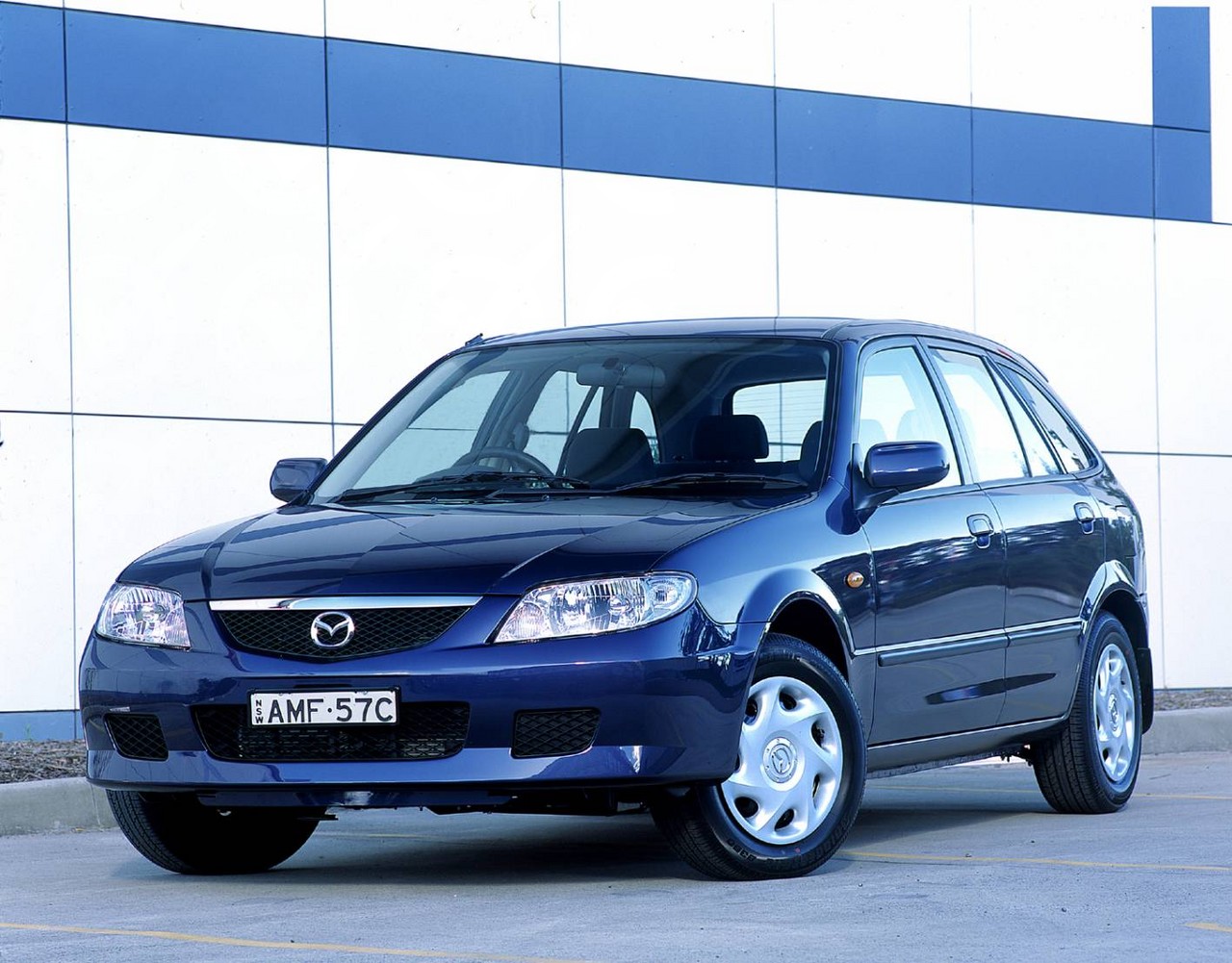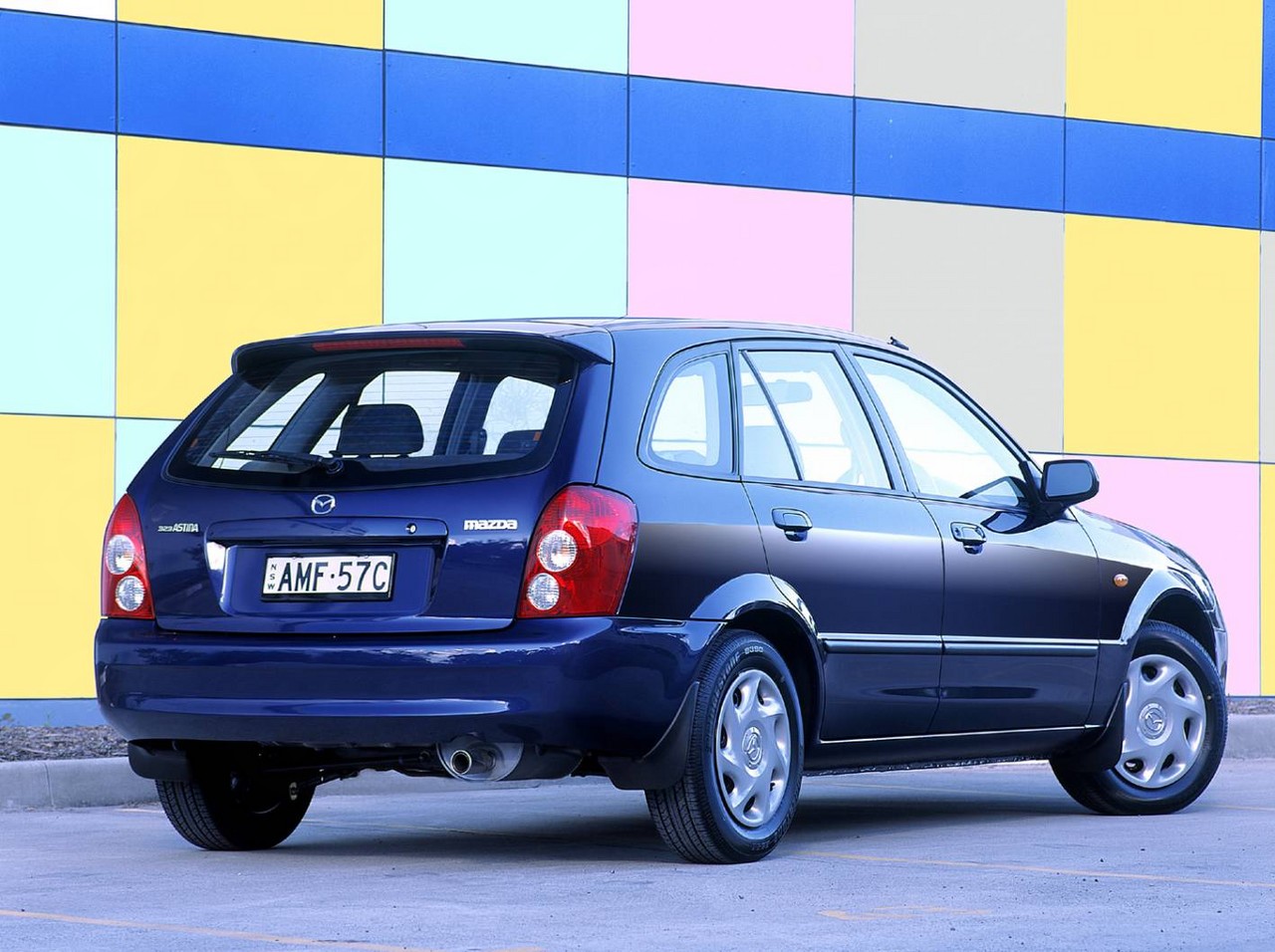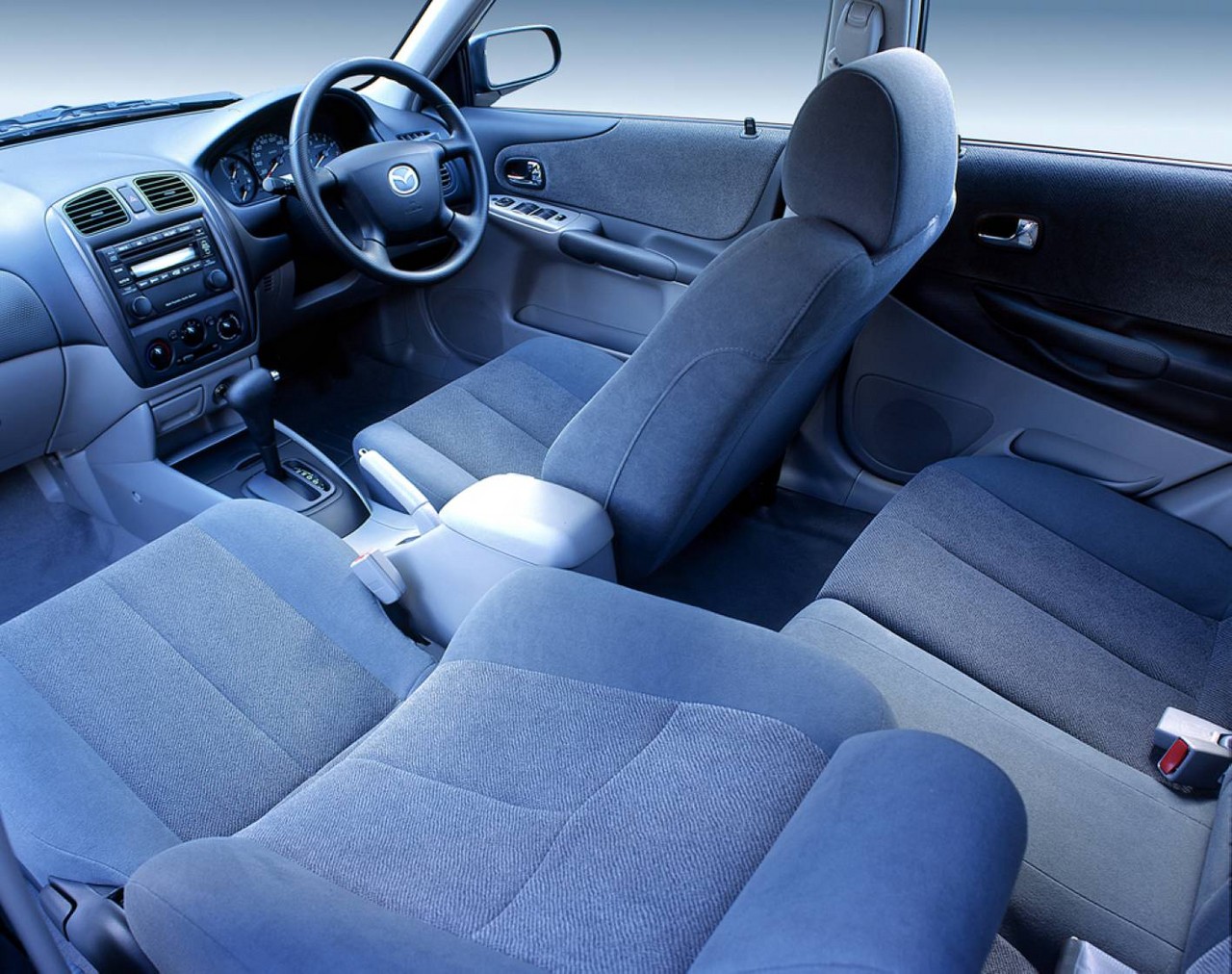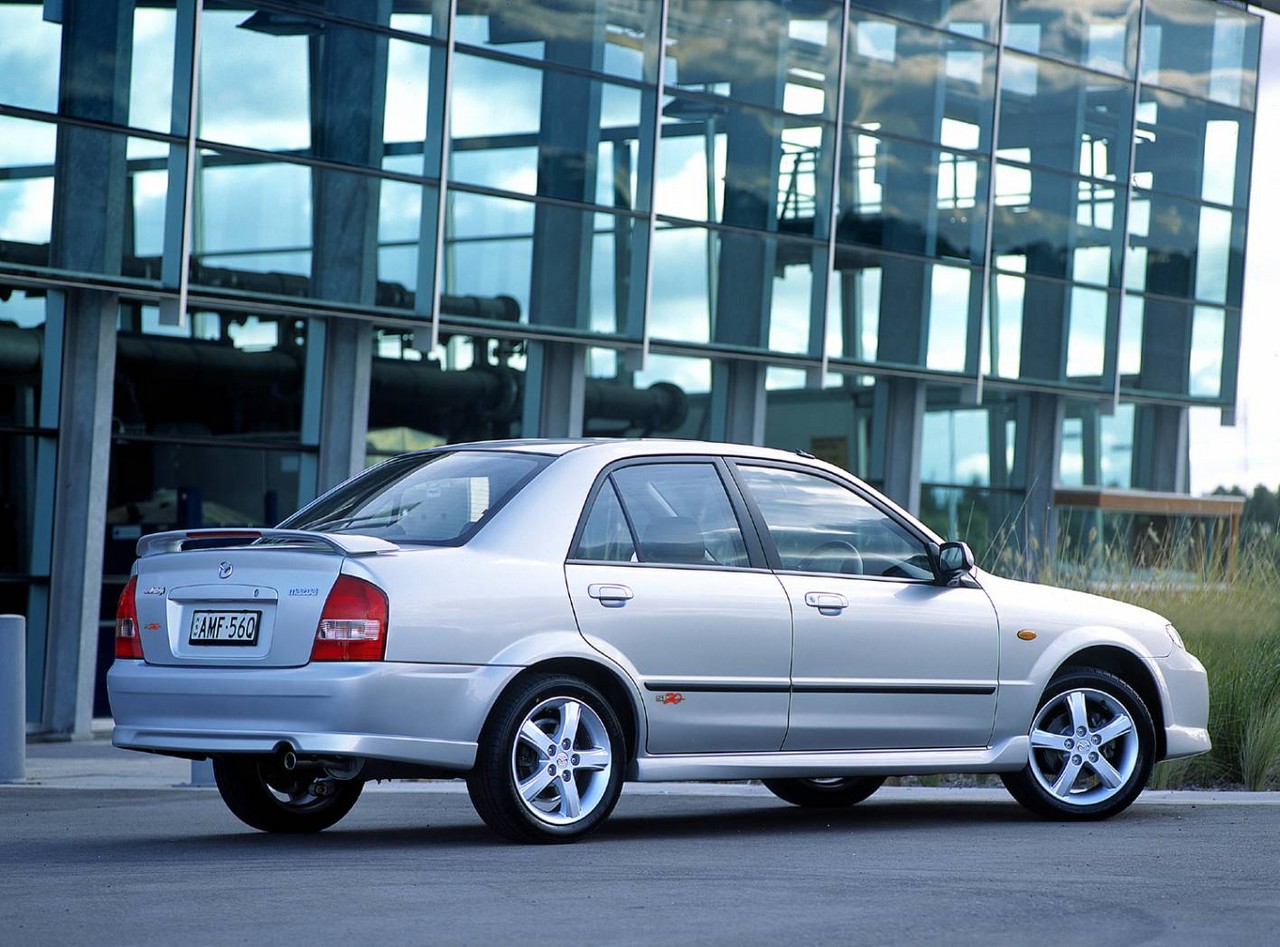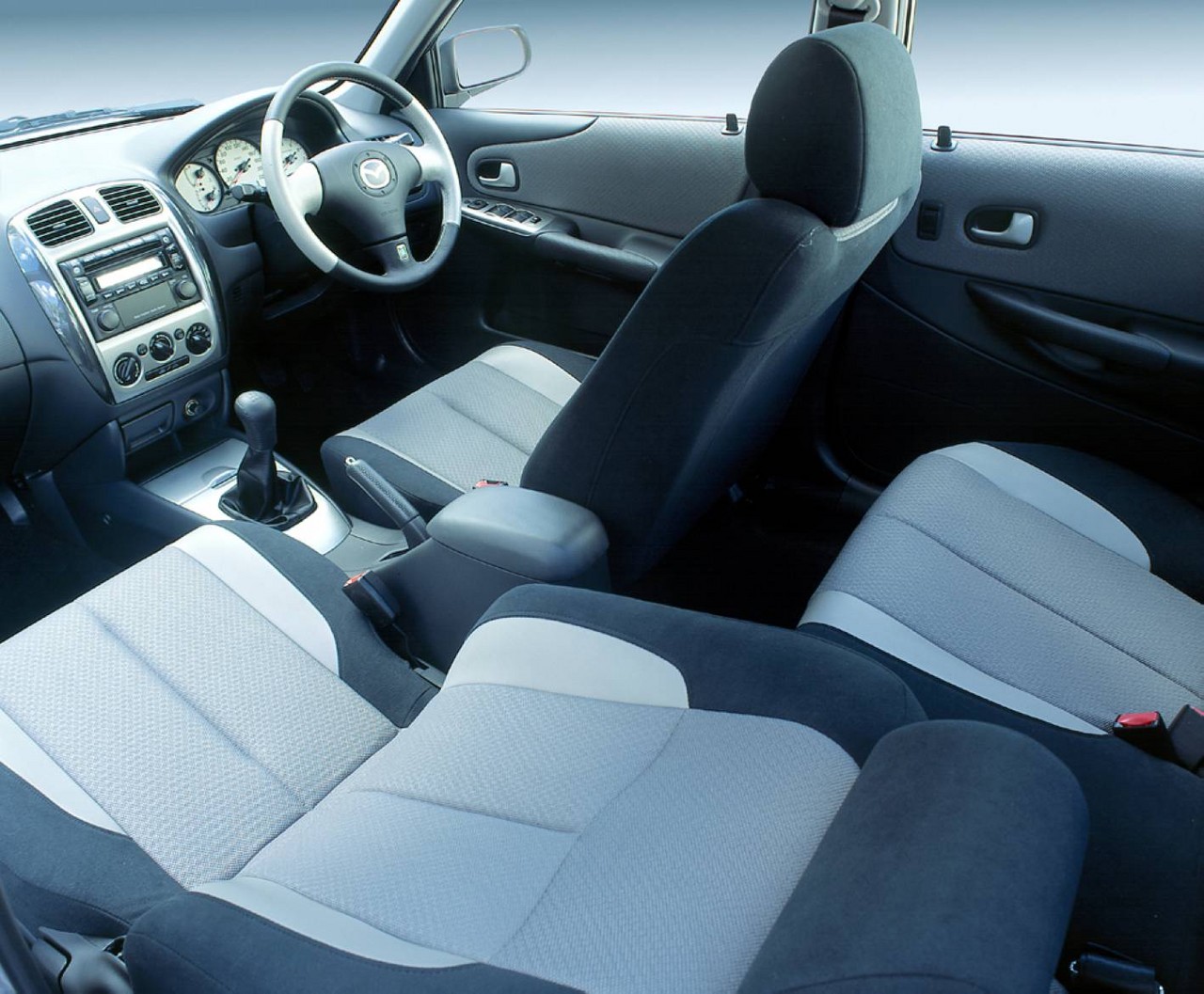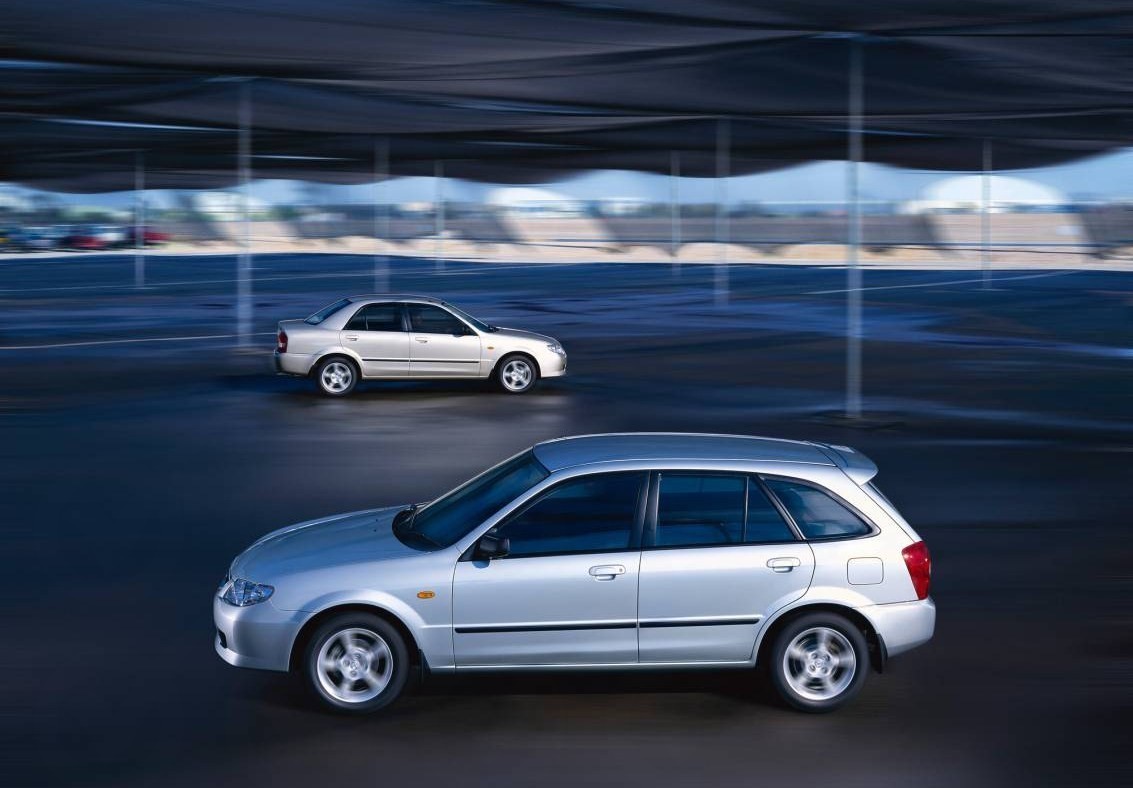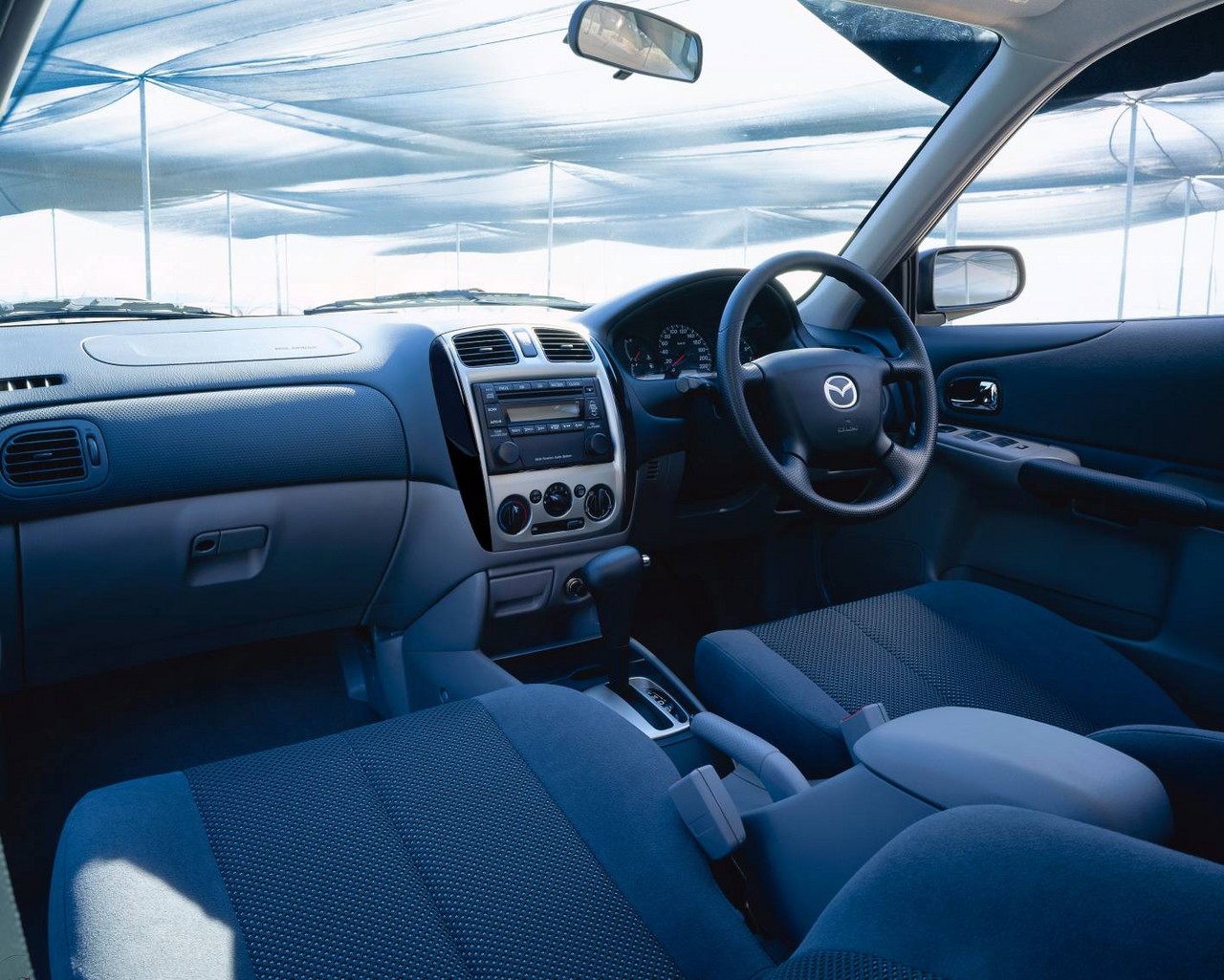
- Flexible 1.8-litre petrol engine
- High standard of fit and finish
- Safe and predictable handling
- Performance of 1.6-litre petrol engine only adequate
- Suspension lacks compliance
- Interior lacks sound insulation
Review: Mazda BJ.I 323 (1998-01)
Overview
Released in September 1998, the Mazda BJ Series I (BJ.I) 323 was available as a small hatchback (the Astina variant) or sedan (Protegé). Manufactured in Japan, the front-wheel drive 323 was available with 1.6- and 1.8-litre four-cylinder petrol engines that were mated to either four-speed automatic or five-speed manual transmissions.
Co-developed with the Ford Mk.5 Laser , the 323 hatchbacks were 4200 mm long, 1695 mm wide, 1410 mm tall and the wheelbase was 2610 mm long; the sedans were 115 mm longer (at 4315 mm), though the other dimensions were unchanged. The 323 was fitted with MacPherson strut front suspension and twin-trapezoidal-link (TTL) rear suspension.
| Body | Variant | Engine | Trans. | Peak power | Peak torque |
|---|---|---|---|---|---|
| Hatchback | Astina | 1.6-litre petrol I4 | 5sp man., 4sp auto |
78 kW at 5500 rpm | 145 Nm at 4000 rpm |
| 1.8-litre petrol I4 | 5sp man., 4sp auto |
92 kW at 6000 rpm | 163 Nm at 4000 rpm | ||
| Sedan | Protegé | 1.6-litre petrol I4 | 5sp man., 4sp auto |
78 kW at 5500 rpm | 145 Nm at 4000 rpm |
| 1.8-litre petrol I4 | 5sp man., 4sp auto |
92 kW at 6000 rpm | 163 Nm at 4000 rpm |
Safety equipment
Standard safety equipment consisted of a driver’s airbag; models with 1.8-litre engines were further equipped with a front passenger airbag.
Models with 1.6-litre engines were fitted with solid front disc brakes and rear drum brakes; models with the 1.8-litre engine, however, were fitted with ventilated front discs and solid rear discs.
Features
Standard features for models with the 1.6-litre engine included a four speaker sound system with radio and cassette, air conditioning, 60/40 split and folding rear seats, central locking, a tilt adjustable steering wheel and an immobiliser.
Models with 1.8-litre engines were further equipped with alloy wheels, remote central locking, power windows and power mirrors.
From February 2000, the 323 was fitted with a body-coloured front grille and, inside, a bright brushed aluminium gearhshift knob, steering wheel logo and park brake button.
1999 Mazda 323 Astina 40thAnniversary Astina
In October 1999, a limited-run 40thAnniversary edition was released of the 1.8-litre Astina. Compared to the standard Astina, the 40th Anniversary edition added a six-stack CD player, climate control air conditioning, a duo-tone leather wrapped steering wheel, leather gear knob (manuals only) and floor mats. Inside, the 40th Anniversary editions were also differentiated by their unique sports trim with leather highlight inserts, white-faced instrument dials and metallic surrounds for the audio, air conditioning and power window switches. Visually, the 40th Anniversary edition could be identified by its body-coloured grilles, ’40th Anniversary’ rear badge, side decal and Passion Red or Highlight Silver paint finishes.
1999 Mazda 323 Shades
In November 1999, limited-run Shades editions were released. For models with 1.6-litre engines, the Shades editions added alloy wheels, a six-stack CD player and remote central locking. For models with 1.8-litre engines, however, the Shades editions only added a six-stack CD player as the other features were already fitted as standard. Visually, the Shades editions could be identified by their ‘Shades’ decals.
Protegé 2000 LE
In March 2000, limited edition Protegé ‘2000 LE’ models were released. Powered by the 1.8-litre engine, the 2000 LE added a six-stack CD player, front fog lights, a body-coloured rear spoiler and floor mats. The 2000 LE could be identified by its distinctive badge and was available in Highlight Silver or Innocent Blue paint finishes.
Review: Mazda BJ.II 323 (2001-02)
Overview
Released in February 2001, the BJ Series II (BJ.II) 323 introduced a revised range with the introduction of the sports-themed Astina SP20 variant which was powered by a 2.0-litre petrol engine. Refinement was also improved with re-tuned suspension bushings and reinforced suspension cross members and steering components. The SP20, however, was further differentiated by its stronger suspension towers, heavy-duty stabilizers bars and additional sound deadening materials.
Visually, the BJ.II 323 could be identified by its more pronounced five-point grille with ‘floating’ centre emblem, sculptured bonnet, new front bumpers, front combination lights (with integrated turning and hazard warning lights) and body-coloured side mouldings. Inside, there was a brighter ambience due to a two-tone off-black/light grey colour scheme and a new four-spoke steering wheel. The seats were also improved for greater lumbar support with a new ‘Pluma flex board’ seatback design replacing the conventional support wires.
| Body | Variant | Engine | Trans. | Peak power | Peak torque |
|---|---|---|---|---|---|
| Hatchback | Astina | 1.6-litre petrol I4 | 5sp man., 4sp auto |
78 kW at 5500 rpm | 145 Nm at 4000 rpm |
| 1.8-litre petrol I4 | 5sp man., 4sp auto |
92 kW at 6000 rpm | 163 Nm at 4000 rpm | ||
| Astina SP20 | 2.0-litre petrol I4 | 5sp man., 4sp auto |
98 kW at 6000 rpm | 174 Nm at 4500 rpm | |
| Sedan | Protegé | 1.6-litre petrol I4 | 5sp man., 4sp auto |
78 kW at 5500 rpm | 145 Nm at 4000 rpm |
| 1.8-litre petrol I4 | 5sp man., 4sp auto |
92 kW at 6000 rpm | 163 Nm at 4000 rpm | ||
| Protegé (Special) |
2.0-litre petrol I4 | 5sp man., 4sp auto |
98 kW at 6000 rpm | 174 Nm at 4500 rpm |
Safety equipment
Compared to its BJ.I predecessor, standard safety equipment for the BJ.II 323 was extended to include front seatbelt pretensioners, while models with the 1.8-litre engine and SP20 variants were further equipped with ABS.
Features
Standard features extended to include a CD player, remote central locking, power mirrors and power windows. The 1.8-litre models were further equipped with a six-stack CD player.
The Astina SP20 was distinguished by its 16-inch alloy wheels with Yokohama Advan 195/50 R16 tyres, climate control air conditioning, front fog lights, leather-wrapped Nardi steering wheel and gear shift knob (for manual models). Inside, the SP20 was also differentiated by its two-tone fabrics, white-faced instrument dials and amber backlighting for dials and switches. Visually, SP20 could be identified by its side skirts, rear under-spoiler, high mount rear spoiler and ‘SP20’ decals.
2001 Mazda 323 Shades editions
In April 2001, Shades editions were released of the 1.6-litre Astina and Protegé variants – these Shades editions were further equipped with alloy wheels.
2001 Protegé Platinum Edition
In September 2001, a Platinum Edition of the 1.8-litre Protegé was released. Compared to the standard Protegé, the Platinum Edition shared interior highlights with the SP20, including the leather-wrapped Nardi steering wheel, two-tone seats and white-faced dials, and added alloy-look trim highlights to the dashboard and floor mats. The Platinum Edition was available in Platinum Silver or Innocent Blue paint finishes.
2002 Protegé Special Edition
Released in April 2002, the Protegé Special Edition was fitted with the 2.0-litre engine, 16-inch alloy wheels and uprated suspension as per the SP20. Inside, the Protegé Special Edition featured contoured sports seats, leather-wrapped three-spoke Nardi steering wheel, leather-wrapped gear knob, alloy and carbon fibre-look dashboard highlights and silver-faced instrument dials. Visually, the Protegé Special Edition could be identified by its Starry Blue mica paint finish, headlight bezels, front fog lights and chrome inserts for the scuff plates.
Review: Mazda BJ.III 323 (2002-03)
Overview
Released in June 2002, the BJ Series III (BJ.III) 323 introduced a revised range as the 1.6-litre engine was discontinued and a Protegé SP20 variant was introduced.
Cosmetic changes for the BJ.III 323, however, were limited to the new tail-lights – the Astina tail-lights incorporated chrome-ringed, clear-lens elements that housed the turn and reversing lights, while the centre section of the Protegé’s tail-lights had a smoked finish.
| Body | Variant | Engine | Trans. | Peak power | Peak torque |
|---|---|---|---|---|---|
| Hatchback | Astina | 1.8-litre petrol I4 | 5sp man., 4sp auto |
92 kW at 6000 rpm | 163 Nm at 4000 rpm |
| Astina SP20 | 2.0-litre petrol I4 | 5sp man., 4sp auto |
98 kW at 6000 rpm | 174 Nm at 4500 rpm | |
| Sedan | Protegé | 1.8-litre petrol I4 | 5sp man., 4sp auto |
92 kW at 6000 rpm | 163 Nm at 4000 rpm |
| Protegé SP20 |
2.0-litre petrol I4 | 5sp man., 4sp auto |
98 kW at 6000 rpm | 174 Nm at 4500 rpm |
Safety equipment
Standard safety equipment for the BJ.III 323 included dual front airbags, ABS and front seatbelts with pretensioners and load limiters. The SP20 variants were further equipped with electronic brake force distribution.
Features
Compared to their BJ.II predecessors, standard features for the BJ.III 323 1.8-litre models were downgraded as the six-stack CD player, power windows and power mirrors were omitted; furthermore, 14-inch steel wheels were fitted as standard. From April 2003, 14-inch alloy wheels were fitted as standard again, though these were replaced with 15-inch alloy wheels in June 2003.
Features for the BJ.III SP20 variants were largely unchanged.
Related links
